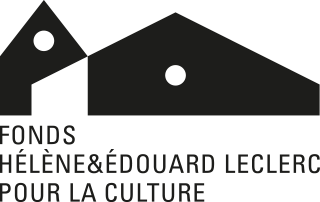- Publié le 19/02/2019
- Par Équipe Médiation
Pas à pas > "Prologue : Avant la rencontre"
Joan Mitchell et Jean-Paul Riopelle se rencontrent à Paris en 1955. S’en suivra une relation amoureuse d’abord intense, puis de plus en plus tumultueuse, qui durera près de vingt cinq ans. Avant de faire connaissance, les deux artistes sont engagés dans des pratiques abstraites expressives différentes, bien que marquées par certains apports stylistiques communs. À New York, haut lieu de l’avant-garde, Mitchell compte parmi les nouveaux représentants de l’expressionnisme abstrait. Son travail, bien que gagnant graduellement en maturité, laisse transparaître l’influence notable de peintres qui ont contribué à promouvoir cet art soustrait à toute référence objective au profit d’une charge émotionnelle émanant essentiellement de l’acte de peindre. Installé à Paris, Riopelle s’impose comme l’un des grands protagonistes de l’art abstrait, aussi dit « art informel ». D’abord associé à l’automatisme, il impose rapidement un style très personnel, pratiquant une peinture fondée à la fois sur la spontanéité gestuelle et la pleine maîtrise d’une matière généreuse, dont ses « mosaïques », révélées en 1953, constituent l’un des points culminants. Depuis, l’art de Mitchell se nourrit de poésie, de littérature et de musique ; celui de Riopelle s’abreuve à l’exubérance, à l’action et à la quête incessante de nouveaux champs d’exploration. C’est donc à travers une sélection d’œuvres hautement significatives que nous proposons ce dialogue inédit mettant en lumière les convergences et les divergences qui sous-tendent la démarche singulière de chacun de ces artistes dans le contexte très particulier de leur vie commune.
Prologue : Before the encounter
Joan Mitchell and Jean-Paul Riopelle met in Paris in 1955. Their romantic relationship, that was initially intense and increasingly tumultuous, lasted for nearly twenty-five years. Before they got to know each other, the two artists were developing distinctive bodies of abstract work that shared some common stylistic elements. In New York, a city with a thriving avantgarde scene, Mitchell became part of the abstract expressionism movement. Her work, which was gradually growing in maturity, was greatly influenced by the group of artists who were developing this form of art, in which all objectivity had been replaced by an emotionality derived from the act of painting. Riopelle lived in Paris and was establishing himself as one of the main figures of abstract art, or art informel. Initially linked to automatism, he quickly became known for his painting style based on both a gestural spontaneity and thick impasto paint, including his “mosaics” which were unveiled in 1953 and are considered to be a high point in his career. From then on, Mitchell’s art thrived on poetry, literature and music, while Riopelle’s drew from exuberance, action and the never-ending search for new fields of exploration. It is, therefore, through a selection of highly significant works that we present this original dialogue that illustrates the convergences and divergences underlying each artist’s unique approach in the very particular context of their conjugal life.
- Commentaires
- Le 20/03/2019
- par Bruno DEVILLERS
- L'idée de cette exposition commune de ces deux artistes est géniale.J'ai été ébloui en découvrant Joan Mitchell à la Galerie du Jeu de paume dans les années 1990, mais je n'ai pas encore eu l'occasion de découvrir le travail de Riopelle. Hélas je ne pourrai pas me déplacer jusqu'à Landernau en avril mais j'aimerai me procurer le catalogue. Quand pensez vous lancer sa vente en ligne ou en librairie ou dans les Cultura ? Je suis impatient, merci de votre réponse prochaine. J'habite Castres 81100. Félicitations pour votre action culturelle à la Fondation.
S'ABONNER AUX NOUVELLES DU FONDS
FHEL
POUR LA CULTURE
AUX CAPUCINS
29800 LANDERNEAU (FRANCE)
02 29 62 47 78





